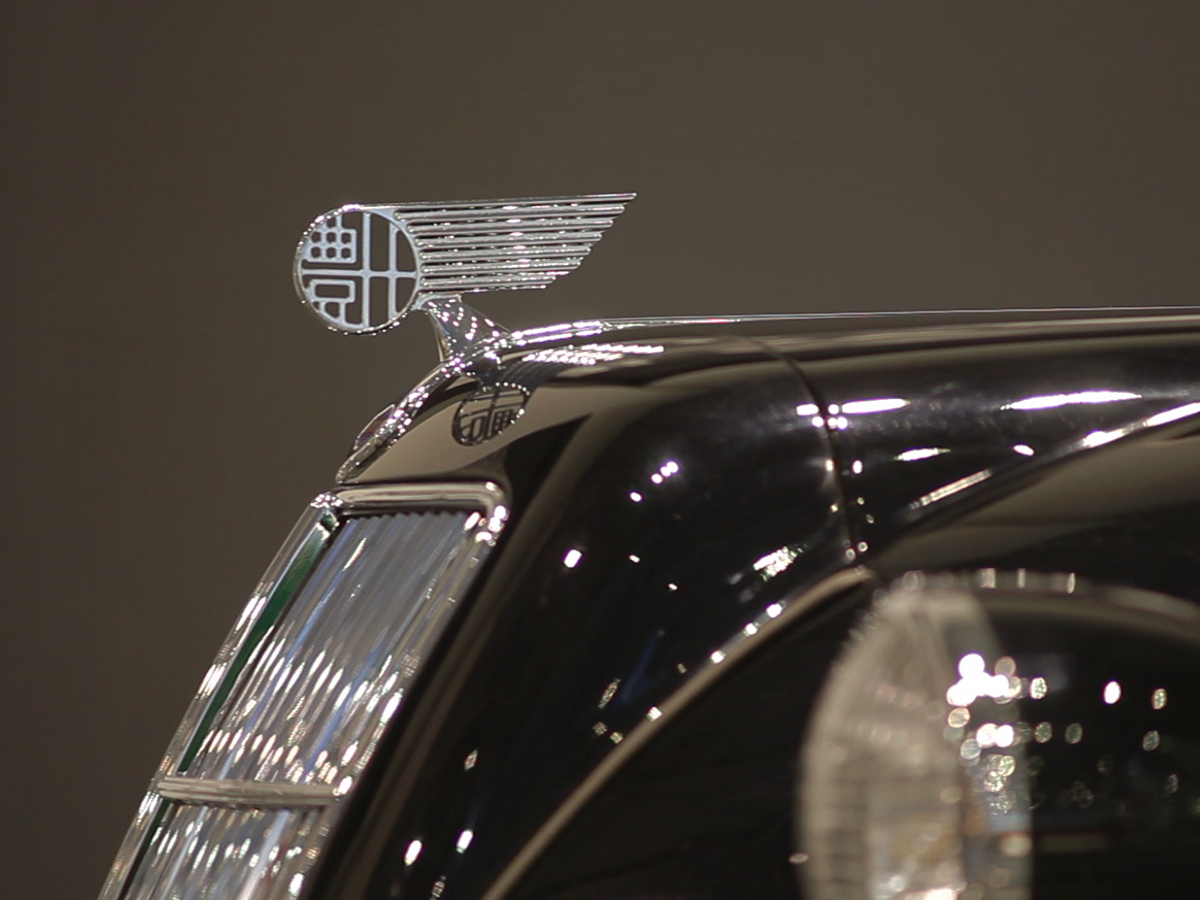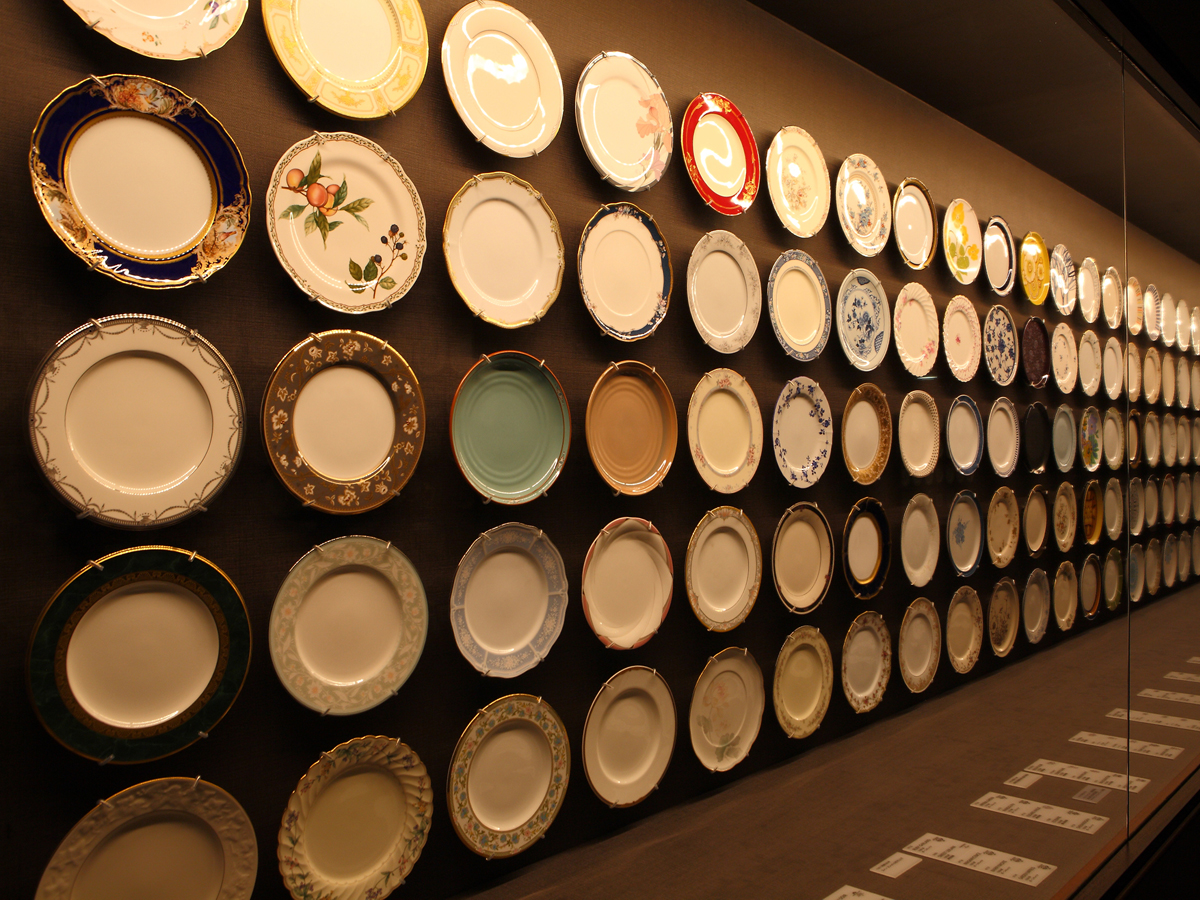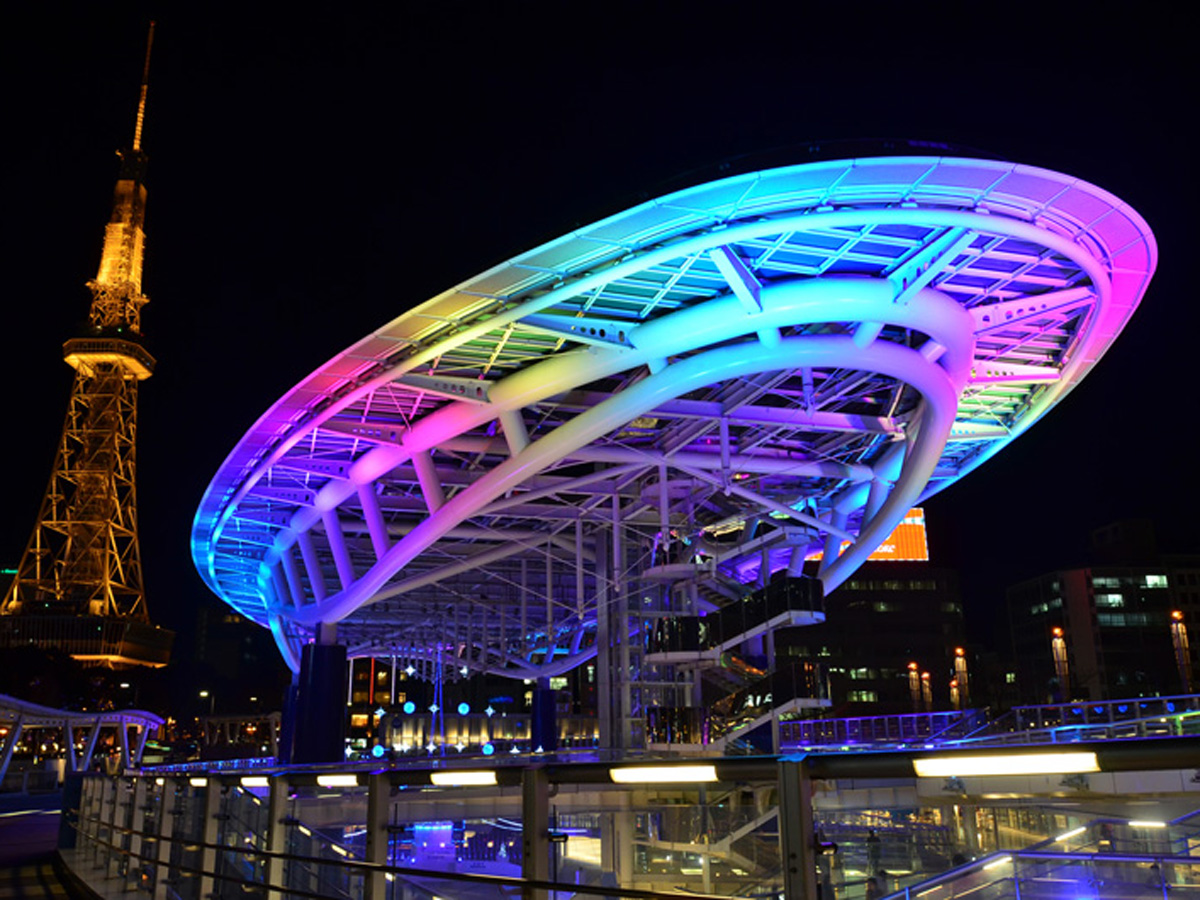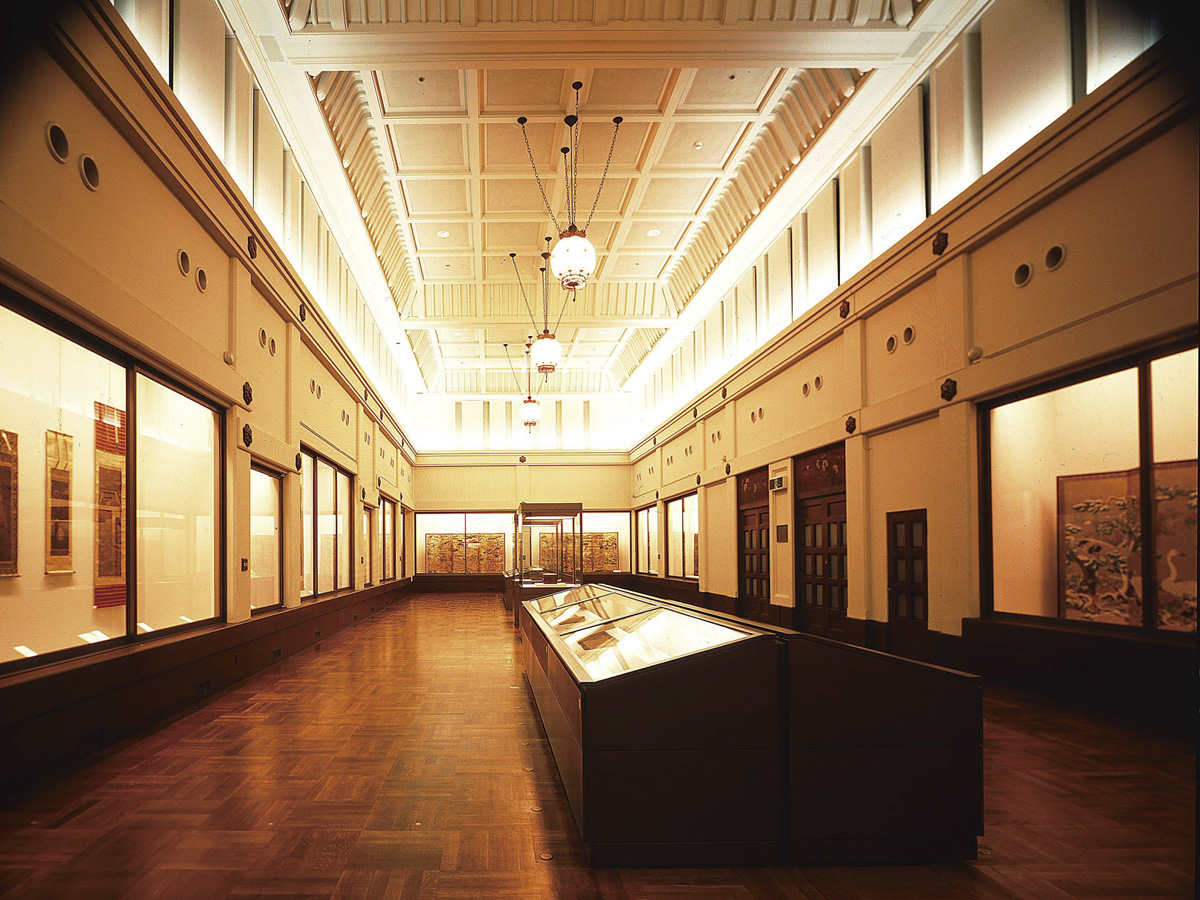On this course, travel to spots of historical and cultural significance in Aichi. Come in contact with Japan's manufacturing techniques, history, and culture!
COURSE CONTENTS
Day 1.
- - 1. Toyota Commemorative Museum of Industry and Technology
- - 2. Noritake Garden
- - 3. Endoji Shopping Street
- - 4. Shikemichi
- - 5. Nagoya Castle
- - 6. Nagoya TV Tower
- - 7. Oasis 21
Day 2.
Day 1.
Nagoya Station

- Bus
- 10 min.
City Bus (Me-guru) Toyota Commemorative Museum of Industry and Technology

- Walk
- 1 min.
Toyota Commemorative Museum of Industry and Technology

- Toyota Commemorative Museum of Industry and Technology opened on the same location where the Toyota Motor Corporation originated, utilizing the prized old factory buildings. The inside of the museum is divided into two pavilions. The first is the "Textile Machinery Pavilion," which conveys the technological progression of textile machines, one of the key industries underlying the development of early modern Japan. The second is the "Automobile Pavilion" where you can see actual machinery operation demonstrations led by an operator.

- Walk
- 1 min.
City Bus (Me-guru) Toyota Commemorative Museum of Industry and Technology

- Bus
- 5 min.
City Bus (Me-guru) Noritake Garden

- Walk
- 1 min.
Noritake Garden

- Noritake Garden is a complex built on the grounds of the former factory adjacent to the head office of Noritake Co., Limited to commemorate their 100th anniversary. Within Noritake Garden is a Welcome Center introducing Noritake history and technology, a Craft Center where you can try painting your own ceramics, and a museum where you can take a factory tour. Carrying a wide selection of products from high-quality ceramic wares to lifestyle outlet items, the shop is also particularly popular.

- Walk
- 15 min.
Endoji Shopping Street
- Endoji Shopping street began around 1612. As a merchant area that accompanied warlord Oda Nobunaga when he moved from Kiyosu to Nagoya, this shopping street is said to be the oldest in Nagoya. Even now, the spirit of the old shopping street is alive and well. Just walking down the street filled with restaurants or stores selling daily necessities will fill you with a feeling of discovery.

- Walk
- 3 min.
Shikemichi

- Shikemichi is a merchant town that appeared at the same as the completion of Nagoya Castle in the beginning of the Edo period. A confectionery that has been around since 1854 and other long-established shops are intermingled with cafes in Japanese-style houses with over 100 years of history. Bringing together new and old, enjoy this special atmosphere to your heart's content.

- Walk
- 20 min.
Nagoya Castle
- In 1609, Tokugawa Ieyasu called on former enemy warlords to build Nagoya Castle as a final strategy for unifying Japan. Ever since then, Nagoya Castle has been counted among the castles of the Owari Tokugawa branch of the Tokugawa family.
Nagoya's tower keep closed for restoration from 2018 , but the Hommaru Palace is open to the public after being authentically reconstructed based on historical records. You can also taste the delicious flavors of Nagoya at the large-scale shopping and eating facility Kinshachi Yokocho Gourmet Town.

- Walk
- 12 min.
Subway Nagoya Castle Station

- Train
- 3 min.
Subway Hisaya-odori Station

- Walk
- 1 min.
Nagoya TV Tower
- Construction on Nagoya TV Tower in Hisaya-odori Park was completed in 1954. A sightseeing spot with more than 50 years of history, the tower is a Nationally Registered Tangible Cultural Property.

- Walk
- 1 min.
Oasis 21

- In 2002, shopping complex Oasis 21 was born in Nagoya City's Sakae district. The building's glass roof and shallow pool suspended in the air is known as Spaceship Aqua, the symbol of Oasis 21. Various events are held at the spacious Galaxy Platform, and you can enjoy shopping or eating at the surrounding stores in the area.

- Walk
- 5 min.
Stay at a Hotel Around Sakae
Day 2.
City Bus Sakae

- Bus
- 15 min.
City Bus Tokugawaen Shindeki

- Walk
- 5 min.
The Tokugawa Art Museum

- The Tokugawa Art Museum first opened in 1935. Centered around hereditary heirlooms dating back to Tokugawa Ieyasu, you can see various treasures used by the daimyo family and passed down for generations, starting with Ieyasu's ninth son, Yoshinao. The Tokugawa Art Museum's amazing collection amounts to over 10,000 artifacts.

- Walk
- 3 min.
Tokugawaen Garden
- Forests are spread out across high and low terrain, covering a total area of 2.3 hectares at this Japanese garden with a pond in the center. An interwoven mix of plants are present in each season, including fresh green leaves, autumn colors, peonies, and irises.

- Walk
- 5 min.
City Bus (Me-guru) The Tokugawa Art Museum

- Bus
- 5 min.
City Bus (Me-guru) Cultural Path Futaba Museum

- Walk
- 0 min.
Cultural Path Futaba Museum and Stroll Around the Area

- With its eye-catching orange Western-style roof, grand parlor dappled with light through stained-glass windows, and traditional Japanese-style rooms, the Cultural Path Futaba Museum is a fine example of Taisho-era romanticism. At the time it was built, this extravagent building's innovative blend of Japanese and Western styles was called the "Futaba Palace," a salon where politicans and business leaders came to visit.

- Taxi
- 15 min.
Osu Kannon Temple, Bansho-ji, and Osu Shopping Arcades

- Along with Senso Kannon and Tsu Kannon, Osu Kannon is counted as one of Japan's Big Three Kannon Temples dedicated to the Buddhist Goddess of Mercy and Compassion. It is also the place where a statue of Hotei, one of the Seven Lucky Gods from Chinese mythology, is enshrined. Within the temple is a vast library of valuable texts, starting with the oldest extant manuscript of the Kojiki, the Annuals of Mythological Japan.
Bansho-ji was established in 1540 as the Oda clan's family temple by the warlord Oda Nobuhide, father of the first of the three unifiers, Oda Nobunaga. The temple is known for a historical episode after Oda Nobuhide's death in which a young and impetuous Nobunaga threw a handful of ashes at the alter.
In the main temple building there is even a karakuri puppet doll which reenacts that very incident.
Osu originally developed as a town around 400-year-old Osu Kannon. These days, the Osu Shopping Arcades are lined with restaurants and cafés offering Nagoya gourmet food. Fashion also has a large presence here, from the latest fashions trends to eclectic secondhand clothing shops.

- Walk
- 3 min.
Subway Osu Kannon

- Train
- 15 min.



